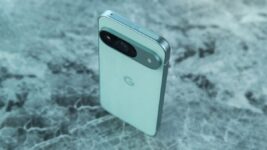The new Google Pixel 9 represents a bit of a departure from its predecessor, offering not just a new look but a number of spec bumps that inch this phone closer to a “Pro” device. Unfortunately, it’s not quite there, despite Google inflating the price by $100 to match some other competitors, but it gets close, offering plenty of fun AI features that users are sure to love (or ignore).
So what’s new with the Pixel 9, how is it different from its Pro siblings, and is it worth getting over the cheaper Pixel 8 or the more expensive Pixel 9 Pro? Last year’s phone was priced well at just $699, but has Google justified the price increase of its latest model?
After spending some time with the Pixel 9, I can confidently say that this is a very good phone, with enough power and good enough cameras to get the job done. The Pixel 9 may not be the most powerful phone out there, but it is good at what it does, and that should be enough for most people. And what’s great is that you don’t even need to pay for a subscription to experience some of its best AI features.
Google Pixel 9: Price and availability
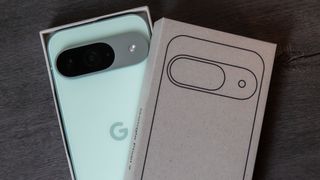
The Google Pixel 9 was announced in early August 2024 during the Made by Google 2024 event and went on sale on August 22. The phone starts at $799 for the 12GB/128GB variant, while the 256GB version is priced at $899. However, if you shop around enough, you will most likely find some compelling Pixel 9 deals.
The phone is available in four different colors: Peony (pink), Wintergreen (green), Obsidian (black), and Porcelain (silver/white).
Google sells the Pixel 9 in the following countries: U.S., Canada, U.K., Austria, Belgium, Czechia, Denmark, Finland, France, Estonia, Germany, Hungary, Ireland, Italy, Latvia, Lithuania, Netherlands, Norway, Poland, Portugal, Romania, Slovakia, Slovenia, Spain, Switzerland, Sweden, Australia, India, Japan, Malaysia, Singapore, and Taiwan.
Unlike the Pixel 9 Pro and Pixel 9 Pro Fold, which receive a one-year free trial of Gemini Advanced, the Pixel 9 may only receive a one-month trial in regions where the offer is available.
Google Pixel 9: Design

The Pixel 9 looks quite different from its predecessor, but many of the main design cues are still there. Notably, the camera visor is no longer connected to the device’s frame; it’s now a floating camera bar with an all-aluminum side and a rounded cutout for the dual camera system. In fact, the shape of the camera bar reminds me of the Pixel’s rather large and bubbly Quick Settings button, which brings an unexpected level of cohesion.
One thing I was concerned about regarding the new Pixel 9 design was the new flat design, particularly the frame. After using phones like the Galaxy S24 Plus and Galaxy Z Flip 6, I’ve become a bit weary of sharp edges as they tend not to play nice with my poor finger when handling the phones one-handed. Fortunately, that’s not the case here, as the satin metal frame is surprisingly soft, and Google gave it a very slight curve where the frame meets the front and rear panels, which keeps the phone from digging into your pinky finger.
I do agree with Android Central’s Phones editor, Nick Sutrich, who said in his Pixel 9 hands-on the new design reminds him of the latest iPhones, at least if you look at it from the front and the sides. In fact, whenever I use the Pixel 9 out and about, friends would comment on how similar it looks to an iPhone, even when looking at it from the back. They could go so far as to say Google “stole” the design, which I think is going a bit far, but the resemblance is a bit uncanny.
The phone is surprisingly comfortable to hold. Beyond its soft frame and somewhat slick glass panels, the phone is still fairly small despite being a couple of millimeters larger than the Pixel 8. Given its size, I wouldn’t exactly put this among the best small Android phones, but the 6.3-inch OLED panel is handled well thanks to the minimal and uniform bezels. My only complaint is that despite not having the smallest bezels I’ve dealt with, I find my finger accidentally activating Circle to Search pretty often. It’s not a huge annoyance, but something to point out if you enable the feature.
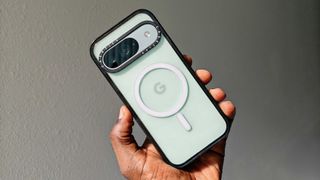
I would also suggest investing in a Pixel 9 case. As nice as it is to feel your phone in its natural, naked state, this phone is just too slippery for its own good. There have been several times when I’ve set it down on a surface, only to hear it fall onto the ground a mere minutes later. Fortunately, the aluminum frame and Gorilla Glass Victus 2 make the phone pretty tough, but I would rather not risk it any more than I should.
Google Pixel 9: Display
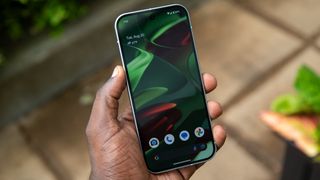
The OLED display looks great, and while I normally leave phones on Natural color mode, the Adaptive display mode doesn’t overly saturate colors as I find on other phones. You will have to remember to turn on Smooth display to kick up to the 120Hz refresh rate, but once you do, it’s smooth sailing.
The added brightness also means that viewing content outdoors should be no problem. Just make sure to slap on a Pixel 9 screen protector, as I’ve already noticed some very light scratches across the display on my unit. These scratches aren’t really noticeable until I view it with the display off from a certain angle (but they’re still enough to annoy me).
I also have no complaints so far about the new ultrasonic fingerprint sensor, which feels fast and accurate.

While the Pixel 9 Pro sports the same size display, it comes with a higher QHD+ resolution. However, I don’t think you’ll miss it on this phone, which is only a FHD+ panel. Everything still appears sharp and content looks great. Would a higher resolution have been nice? Perhaps, but at this size, it doesn’t really matter much, and the slightly smaller and just as costly Galaxy S24 has the same resolution.
Yet, while I find the display to be quite nice, others may not fare as well. Google still keeps the display at a particularly low PWM rate, meaning people that are PWM-sensitive may find it difficult to use the display.
Google Pixel 9: Hardware and specs
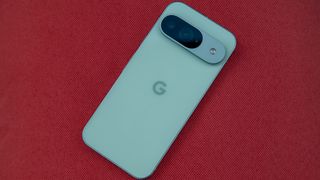
The Tensor G4 chipset isn’t a huge upgrade over its predecessor, but that matters very little here. Coupled with 12GB of RAM, the Pixel 9 performs quite well when opening and juggling apps. I think most people buying this phone will be pleased with its performance, especially when it comes to AI tasks. I also haven’t noticed the phone getting too warm when playing games like Honkai: Star Rail or Fall Guys, which is a good sign to me, although touch input does seem ever-so-slightly delayed at times.
| Category | Google Pixel 9 |
|---|---|
| Display | 6.3-inch Actua display, 120Hz AMOLED (60-120Hz), 2400×1080, HDR, 2700 nits, Gorilla Glass Victus 2, 240Hz PWM dimming |
| Chipset | Google Tensor G4, Titan M2 security module |
| RAM | 12GB |
| Storage | 128GB/256GB |
| Rear camera 1 | 50MP f/1.68, 1/1.13″ sensor, Octa PDAF, 82-degree FoV, OIS, 4k/60 recording |
| Rear camera 2 | 48MP f/1.7, 1/2.55″ sensor, 123-degree wide-angle, macro, autofocus, Quad-PD, 4k/60 recording |
| Rear LDAF sensor | Single-zone laser autofocus |
| Front camera | 10.5MP f/2.2, 95-degree wide-angle, autofocus, 4k/60 recording |
| Connectivity | Wi-Fi 7, 5G (mmWave and Sub-6), Bluetooth 5.3, NFC, AptX HD, USB-C 3.2, Physical and eSIM, Satellite SOS |
| Ingress Protection | IP68 dust and water resistance |
| Security | In-screen ultrasonic fingerprint module, face unlock |
| Audio | Stereo sound, USB-C |
| Battery | 4,700mAh, 27W wired charging, 20W wireless charging, 5W reverse wireless charging |
| Dimensions | 152.8 x 72 x 8.5mm, 198g |
| Colors | Obsidian, Porcelain, Wintergreen, Peony |
| Software support | 7 years of Pixel and OS updates |
The phone has pretty decent haptics and good audio, which doesn’t surprise me. The dual stereo speakers sound very full, with plenty of depth and good bass response, while the haptics remain quite subtle when navigating the phone or when receiving notifications.
Storage is also a problem for the Pixel 9. The base model comes with just 128GB, which just seems small for a flagship phone in 2024. As such, after setting up the Pixel and moving apps and audio over from my daily driver, the Pixel told me I had used 90% of my available storage. As pointed out by Android Central senior editor Harish Jonnalagadda, there are plenty of mid-range phones that have double this amount of storage, so the fact that the three Pixel 9 series phones start with 128GB is a bit ridiculous.
The Pixel 9 supports Wi-Fi 7 and Bluetooth 5.3, and while I personally don’t own a Wi-Fi 7 router and probably won’t for some time, it’s nice to see it here. I’m also hoping we’ll get proper Auracast support soon, hopefully after Android 15 rolls around.
I am sad to see the lack of UWB support, meaning you can’t take advantage of more powerful location-tracking features or digital car key functionality. Whether it’s truly necessary remains to be seen, but it’s one of the things setting this phone apart from its Pro siblings.
Google Pixel 9: Battery life and charging

Lastly, I’ve been quite impressed with the battery life so far. The phone easily lasts me until the end of the day, and I get around seven or eight hours of screen time, which is pretty good. Google claims 24+ battery life and even longer with Energy Saver (since that’s kind of how it works), and while I haven’t gotten more than a day of battery life, I imagine it will vary based on your usage.
Unfortunately, there are other aspects of the battery that I’m less impressed by. The 27W charging is almost unbearably slow, which is something that has always annoyed me about Pixel phones. Unlike the Pixel 9 Pro XL, which charged up to 70% in just 30 minutes, the Pixel 9 takes the same amount of time to just reach 50%, although those figures are based on a 45W Google charger.
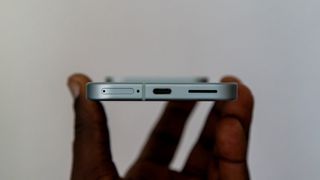
I don’t have a Google 45W charger, and my experience has been quite different, with the phone taking a bit longer to reach 50% and then having to wait another hour to get to full when using a 100W charger from Anker. Fortunately, 50% still lasts you a good amount of the day, but wired and wireless charging speeds fall behind many other flagship Android phones with fast charging capabilities.
You also won’t find Qi2 wireless charging. This isn’t the end of the world, but with the popularity of MagSafe cases for Android phones, it’s surprising to see Google skip out on the standard that people clearly want when it’s been available for some time now.
Google Pixel 9: Cameras
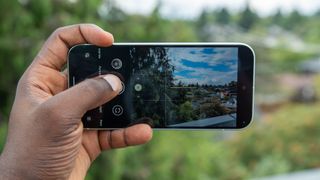
I’m normally quite impressed with Pixel cameras, and while images captured from the Pixel 9 aren’t bad, they’re not particularly remarkable to me. Images are detailed and crisp, and there’s a great deal of dynamic range, even in lower lighting conditions.
That said, I do find that images sometimes lack that extra punch of vibrancy or saturation that I like, and as a result, sometimes photos can appear a bit dull. I’ve also seen instances where the sky might get blown out, but this doesn’t happen too often. Otherwise, images have nice natural bokeh, and Macro Focus takes it to another level by letting you get really close.
Unfortunately, the Pixel 9 still lacks a third rear camera. This becomes particularly clear when compared to the Galaxy S24, which is also priced at $799 and sports a third lens for 3x telephoto images. Sure, the Pixel takes pretty good images with up to 8x Super Res Zoom, but the lack of a dedicated telephoto camera limits the zoom capabilities when compared to the Pixel 9 Pro.
I’ve been comparing the camera to that of the Motorola Razr Plus 2024, which has been my main driver for the past couple of months. To my surprise, I find that I often prefer the Razr Plus over the Pixel 9, which is something I never thought I’d say. Images from the Razr just have that extra bit of vibrancy that I like in images, even if the Pixel often brings more depth to photos. I also find that post-processing on the Pixel tends to make photos look a bit artificial, while the Razr tends to keep things a bit more natural, even with lighting.
Still, the added dynamic range on the Pixel 9 can help make certain details stand out better than they would on the Razr Plus 2024, which isn’t as consistent on this front. The Razr also falls behind on low-light images, whereas the Pixel 9 retains plenty of detail.
The two phones sometimes trade blows depending on the lighting conditions, and I prefer many Razr images over the Pixel. That said, while Motorola has clearly put in some work to improve its foldable camera, the Pixel is much more consistent overall in its shots.
One cool feature I like to show off is Add Me, which lets the person taking a photo add themselves to the image after it’s been taken. It’s a very neat feature, and I’ve seen some excellent examples that make it look pretty convincing that everyone was in the photo.
My example (below) is admittedly a bit different from what Google had in mind, and at first glance, it looks fine until you squint and realize something’s off. The result isn’t perfect, but capturing yourself twice in the same frame is a very cool effect that I wouldn’t be able to replicate easily using photo editing applications.
For a more traditional use of Add Me, Nick Sutrich has seen a result from the feature with him and his family, and you can check it out on his Pixel 9 Pro review. It’s a much better example, but even then, it takes a squint to realize something’s off and that someone has essentially been added to the photo. Still, it’s a very cool feature that I think many would find useful when the moment calls for it.

Google Pixel 9: Software and AI
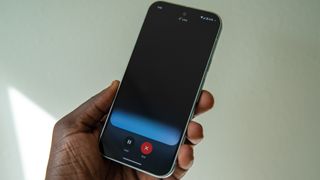
At the time of writing, the Pixel 9 is still running Android 14 as Google prepares to roll out stable Android 15 to its devices and others. It’s a little odd that it didn’t launch with the update, but it’s not a huge deal. After all, Google was able to include plenty of new features on its Pixel 9 phones that we will likely see come to older Pixels down the road. The company is also extending its seven-year update promise to the Pixel 9, which is good to see, even if you don’t plan to keep the phone for that long.
The Pixel 9 supports Gemini Nano with Multimodality, meaning it can handle some pretty complicated stuff. I’ve played around with a few of the new AI features, and so far, I’m pretty impressed. Among them, Pixel Studio is probably my favorite new app. It’s a text-to-image generator powered by Google’s new Imagen 3 model. It’s pretty easy to use, allowing you to go into existing images available in the studio or to create your own from scratch.
The results are pretty damn impressive, and more often than not, they put a smile on my face. The app does quite well in generating clear, high-quality images, and the results can be spot-on, including how the app generates text like book or movie titles.

Magic Editor also has some interesting new features, like Reimagine, which lets you change aspects of a photo in your gallery by typing a prompt. You can pretty much completely transform an image with surprisingly good detail. The results may not be completely perfect, but the feature feels more versatile and capable than what I’ve seen with Samsung’s Sketch to Image feature.

Of course, there have been some examples of both Pixel Studio and Reimagine generating some unfavorable things. However, Google is continuing to gain feedback and adjust things accordingly, so we should see much less of that when using these features.
Call Notes is a useful way to record and transcribe calls, and it not only lets you replay the recording or search through the transcription, but the feature also summarizes the details of the call, in case you just need to remember what the gist of the conversation was.
Then there’s Pixel Weather, which is a beautiful app that provides AI-generated reports of the rest of your day and what you can expect the following day, complete with weather animations. It does a decent job of covering the basic points of the forecast without overloading you with information, although I can see how some people would want even more detail. That said, I’m not sure how useful the AI-generated reports are, as their main purpose seems to be to summarize the information already presented to you.
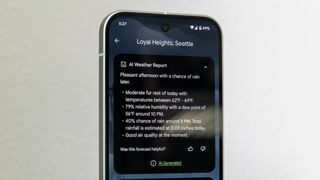
Speaking of usefulness, I still can’t find a reason to actually use the Pixel Screenshots app, as it’s simply just a way to search screenshots and create AI summaries of them. My thing is that most of the screenshots I take are of funny memes or photos that I find interesting or need for work (which are used immediately), and it’s rarely anything that I ever need to recall. I’m sure some people will find it useful, and I may end up changing my mind as I continue testing the phone, but right now, it just feels a bit superfluous.
I will say that I’m coming around to Gemini Live, although I also haven’t found much use for it beyond having fairly mundane or asinine conversations. It actually sounds surprisingly natural in its responses and appears to understand my queries well, even if they’re multilayered or if I’m seemingly rambling a bit. I asked for some diet tips to achieve my goal weight, and it provided some sound advice. I then followed up by asking for exercises that could help, and it gave equally sound advice.

Then, Gemini Live couldn’t remember the weight goal I gave it just a day prior, so I had to remind it during follow-up queries. Basically, I can see this being a useful feature occasionally when you have very specific and multi-layered questions, but I already don’t use Google Assistant very much, so I’m not sure how much I would use Gemini or Gemini Live on a regular basis.
On the plus side, Gemini Live is no longer tied to Gemini Advanced (which is locked behind a Google One AI Premium subscription). That means you can try it yourself to see just how useful it can be for you. Plus, the regular Gemini assistant continues to gain more functionality, making it a more viable replacement for Google Assistant.

Unfortunately, Google limits the Pixel 9 compared to its Pro siblings, and it’s not clear why. Despite sporting the same Tensor G4 chip and 12GB of RAM, enough to handle on-device AI processing, Google has omitted certain camera features from the base Pixel 9, including Video Boost, Pro Controls, High-Res photos, and more.
When asked why there’s such a feature disparity, Google couldn’t provide a clear answer, making it seem as though it’s just gatekeeping features for its more expensive phones. It’s a bit unfortunate since I don’t think Samsung does the same thing with the base Galaxy S24, and that only has 8GB of RAM.
Google Pixel 9: The competition
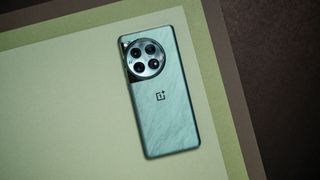
As the base Pixel 9 model, there are a few other phones you can consider at or below this price point from companies like Samsung and OnePlus.
The base Galaxy S24 is the closest competitor to the Pixel 9, offering a similarly small, mostly flat chassis and comparable specs. One major difference is the presence of a telephoto camera, something the Pixel 9 lacks. On the other hand, the Pixel 9 comes with 12GB of RAM, which should make it more capable when it comes to on-device AI processing. It also has a larger battery, which should theoretically help it last longer on a single charge. Otherwise, both offer similar software promises and great camera quality for the same price.
The OnePlus 12 is another similarly priced option for anyone looking for a flagship. As far as specs go, the phone bests the Pixel 9 and Galaxy S24 in many areas, sporting a larger battery, much faster charging, and up to 16GB of RAM. The downside to getting a OnePlus is that the software isn’t for everyone, and support isn’t as robust. The phone also isn’t as water resistant, so you can’t submerge it.
Google Pixel 9: Should you buy it?
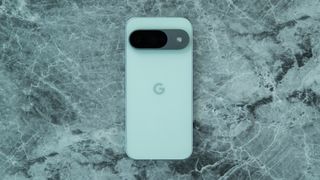
You should buy this if…
- You want a new Google flagship without spending $1000.
- You want the latest AI features on your phone before anyone else.
- You want some of the best cameras on the market.
You shouldn’t buy this if…
- You own a Pixel 8.
- You want a phone with fast charging capabilities.
- You want a phone with a telephoto camera and Pro camera controls.
I’ve never been a big fan of Pixel phones, but after using the Pixel 9 for a month, I think that it’s a great phone that you should consider purchasing for your next upgrade, especially if you’re not trying to drop $1000 on a Pixel 9 Pro.
Tensor G4 may not be the most powerful chip on the market, but it’s perfect for the Pixel and how Google is positioning this phone, especially when paired with 12GB of RAM. Its performance is great, battery life is great, and you won’t be disappointed by its cameras unless you’re hoping for a telephoto lens with strong zoom capabilities.
Yes, the Pixel 9 still doesn’t get all the features you’ll find on the Pro phones, and that’s a problem. If you think you would want some of those missing features, then you should spring for the Pro phones. Otherwise, the Pixel 9 is still a good phone if you can stomach the $100 premium over its predecessor.
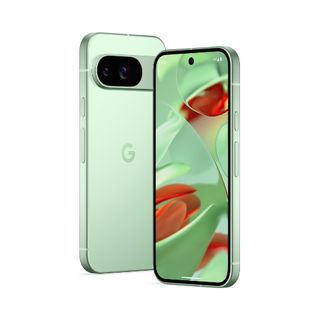
The baby Pixel, all grown up
With a new design and a new chip, the baby Pixel 9 is more powerful than ever, able to easily handle on-device AI tasks such as image generation, transcription and summaries, and much more. You still get impressive cameras and software to match, letting you reimagine your photos to take them to the next level.
